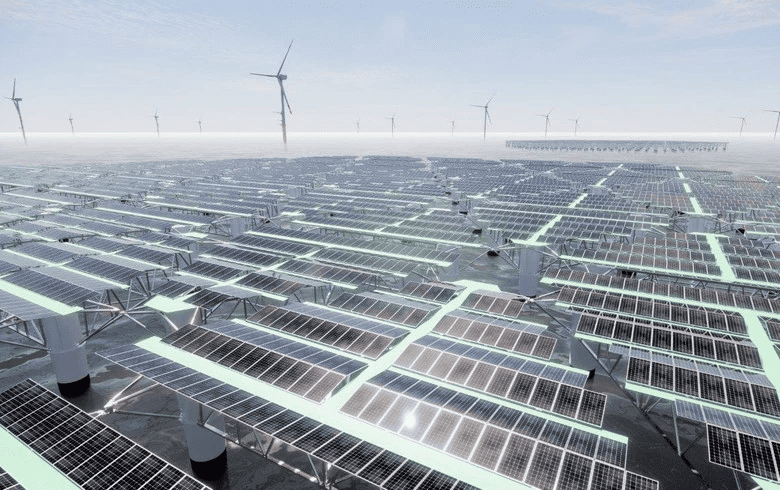
The United Nations Climate Conference (COP26) in Glasgow is being held in the year that the European Union is demonstrably committed to making the continent more sustainable. During the climate summit, Innovation Origins will be zooming in on Italy. This country receives about 20 percent of the money from the Next Generation EU fund that links recovery from the cororona pandemic to sustainability.
No one can say that the Italian government led by Mario Draghi, the former director of the European Bank, is not pushing ahead with it. In record time, his government produced a plan of action aimed at boosting the growth of the Italian economy. Italy has to become more digital, dynamic, sustainable and inclusive. In August, the European Commission approved Draghi’s plan (as well as similar plans from other European countries).
The Italian plan amounts to €191.5 billion of the €800 billion to mitigate the effects of the pandemic. The lion’s share of this amount is therefore being lent to Italy. However, the money will not just be given away.
Italy is falling apart at the seams
The Italian government has cobbled together another €30.6 billion through a supplementary government fund. So for the next five years, Italy will have an extra margin of €222.1 billion. The money is being spent on six different areas. The main part (about €100 billion) comprises investments in the field of digitalization, innovation and the ecological transition.
As such, the money is not only being spent to meet the targets of the Paris (2015) or Glasgow (2021) climate summit, but also to become a more modern country. Italy’s education system is falling apart at the seams, its judicial structure is shaky, and its economy has been growing at an annual rate of only 0.2 percent (pre-Covid) since the year 2000.
Success not assured
The fact that Italy has the financial ability at long last to do things differently does not mean that success is assured. The first thing to do is to flesh out the goals and so-called ‘milestones’. These are quantitative and qualitative measures, 419 of which have been identified by the government. This step has been taken. “In fact, the government is accelerating this,” says Luciano Monti,, professor of European Union Policy at LUISS University in Rome.

More problematic is when it turns out at the end that the funds were allocated but not disbursed. That may be because there were problems with the applications. Monti: “That was always the problem in the past.” According to a report by the European Court of Auditors (chapter 2 of this report) concerning last year, Italy is ranked second-to-last when it comes to finalizing projects that received European funding. In the 2014-2020 period, Italy received only 38 percent of the money it was promised. This is due to the poor quality of the administrative and bureaucratic tier of the government.
“In the next five years, as many as four times more European funds will be available than in other years. That is why the government has justifiably given priority to structural reforms,” says Monti. The professor himself is also a member of a government committee that checks whether the proposed plans will have a favourable effect on the position of young people.
Tenders are minor disasters
Reforms include, for example, more flexible regulations for tenders. Italian tenders are often minor disasters, even for foreign investors. The paperwork and time wasted are staggering. But the government has already enacted decrees to change this. In doing so, numerous rules and standards have been simplified and the times (application, processing, appeal, etc.) are being shortened.
“Another important reform that is being carried out is the training of officials, because it is mainly they who will be managing the funds. This means investing in the quality of officials on a local level, since the projects have an impact on the local level.”
Italy is also planning to measure the success of the investments in a different way than in the past. Monti: “The goal of the financial injection is to trigger a strong recovery. If that doesn’t happen, we will burden future generations with having to repay the loans. It is not for nothing that this European recovery fund is called: ‘NextGenerationEU’.”

“That is why a new way has been opted for. This involves measuring not so much in terms of output, but in terms of outcome.” When measuring based on output, the result of a service is measured, but not the way in which it was carried out. Measuring by outcome is more efficient”.
NextGenerationEU
One such ‘outcome’ is the investment in the development of 7,500 fast charging stations for EVs along highways and more than 13,000 in towns and cities. The Italian plan within the framework of NextGenerationEU is replete with other green targets, measures and investments. Professor Monti is optimistic. “The ecological transition is very timely for Italy. It gives a boost to the circular economy and creates jobs for young people.”
The UK and Italy have committed to putting climate change and reversing biodiversity loss at the heart of the multilateral agenda for 2021, including chairing the G7 (July), G20 (this weekend) and COP26 (starting Sunday). A pre-COP26 meeting was held in Milan in early October.
Read more about Italy’s green plans.








